
The Warsaw Ghetto was the largest of the Nazi ghettos during World War II and the Holocaust. It was established in November 1940 by the German authorities within the new General Government territory of occupied Poland. At its height, as many as 460,000 Jews were imprisoned there, in an area of 3.4 km2 (1.3 sq mi), with an average of 9.2 persons per room, barely subsisting on meager food rations. Jews were deported from the Warsaw Ghetto to Nazi concentration camps and mass-killing centers. In the summer of 1942, at least 254,000 ghetto residents were sent to the Treblinka extermination camp during Großaktion Warschau under the guise of "resettlement in the East" over the course of the summer. The ghetto was demolished by the Germans in May 1943 after the Warsaw Ghetto Uprising had temporarily halted the deportations. The total death toll among the prisoners of the ghetto is estimated to be at least 300,000 killed by bullet or gas, combined with 92,000 victims of starvation and related diseases, the Warsaw Ghetto Uprising, and the casualties of the final destruction of the ghetto.

Żegota was the Polish Council to Aid Jews with the Government Delegation for Poland, an underground Polish resistance organization, and part of the Polish Underground State, active 1942–45 in German-occupied Poland. Żegota was the successor institution to the Provisional Committee to Aid Jews and was established specifically to save Jews. Poland was the only country in German-occupied Europe where such a government-established and -supported underground organization existed.
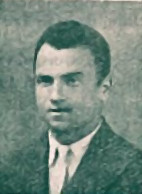
Szymon Datner was a Polish historian, Holocaust survivor and underground operative from Białystok, best known for his studies of the Nazi war crimes and events of The Holocaust in the Białystok region. His 1946 Walka i zagłada białostockiego ghetta was one of the first studies of the Białystok Ghetto.

The Holocaust in Poland was the ghettoization, robbery, deportation, and murder of Jews in occupied Poland, organized by Nazi Germany. Three million Polish Jews were murdered, primarily at the Chelmno, Belzec, Sobibor, Treblinka, and Auschwitz II–Birkenau extermination camps, representing half of all Jews murdered during the Europe-wide Holocaust.
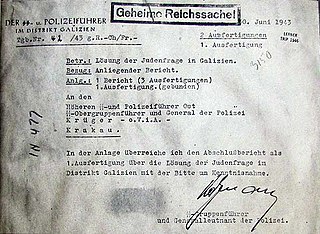
The Katzmann Report is one of the most important testimonies relating to the Holocaust in Poland and the extermination of Polish Jews during World War II. It was used as evidence in the Nuremberg Trials and numerous other proceedings against war criminals abroad. It is a leather-bound report by SS-Gruppenführer Fritz Katzmann, German SS and Police Leader (SSPF) in the District of Galicia, entitled "Lösung der Judenfrage im Distrikt Galizien", submitted on June 30, 1943 to his superior officer, the Higher SS and Police Leader (HSSPF) "Ost" (East), SS-Obergruppenführer Friedrich-Wilhelm Krüger. It describes part of Operation Reinhard.
Schutzmannschaft Battalion 202 was a failed collaborationist auxiliary police battalion in the General Government during World War II. It was made up of 360 conscripts with German leadership. The unit was created in Kraków on March 27, 1942 with recruitment beginning in May. Only two Polish men volunteered. As a result, the Germans resorted to conscription from the regular Polish city-police called Einheimische Polizei. Once in Volhynia, the battalion stationed in Łuck originally. Soon later, in around Kostopol, half the members deserted to Polish resistance 27th Home Army Infantry Division, in defence of ethnic Polish population against the UPA massacres, and also committed a number of crimes against the civilian population, participating in the pacification of Ukrainian villages. Additional 60 Poles were rounded up and executed by the Nazis for mutiny.

Szmalcownik ; in English, also sometimes spelled shmaltsovnik) is a pejorative Polish slang expression that originated during the Holocaust in Poland in World War II and refers to a person who blackmailed Jews who were in hiding, or who blackmailed Poles who aided Jews, during the German occupation. By stripping Jews of their financial resources, blackmailers added substantially to the danger that Jews and their rescuers faced and increased their chances of being caught and killed.
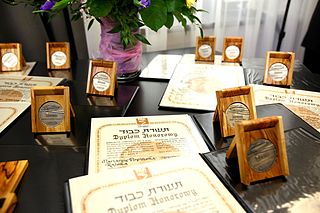
The citizens of Poland have the highest count of individuals who have been recognized by Yad Vashem as the Polish Righteous Among the Nations, for saving Jews from extermination during the Holocaust in World War II. There are 7,232 Polish men and women conferred with the honor, over a quarter of the 28,217 recognized by Yad Vashem in total. The list of Righteous Among the Nations is not comprehensive and it is estimated that hundreds of thousands of Poles concealed and aided tens of thousands of their Polish-Jewish neighbors. Many of these initiatives were carried out by individuals, but there also existed organized networks of Polish resistance which were dedicated to aiding Jews – most notably, the Żegota organization.
Schutzmannschaft Battalion 107 was a failed unit of Nazi German auxiliary police in semi-colonial General Government during World War II. Created in late 1943 in Volodymyr-Volynskyi, the battalion did not take part in combat. It was made up of 450 local Poles from Volhynia under the German command, purposed to guard railway lines. In January 1944 the entire battalion deserted, and joined Armia Krajowa in defence of civilians against the wave of massacres of Poles in Volhynia.

Baudienst, full name in German Baudienst im Generalgouvernement, was a forced labour organization created by Nazi Germany in the General Government territory of occupied Poland during World War II. Baudienst was subordinate to the Reichsarbeitsdienst.

Polish Jews were the primary victims of the Nazi Germany-organized Holocaust in Poland. Throughout the German occupation of Poland, Jews were rescued from the Holocaust by Polish people, at risk to their lives and the lives of their families. According to Yad Vashem, Israel's official memorial to the victims of the Holocaust, Poles were, by nationality, the most numerous persons identified as rescuing Jews during the Holocaust. By January 2022, 7,232 people in Poland have been recognized by the State of Israel as Righteous among the Nations.
The Polish Center for Holocaust Research is an academic and research center at the Polish Academy of Sciences in Warsaw, Poland. The center's director is historian Barbara Engelking.
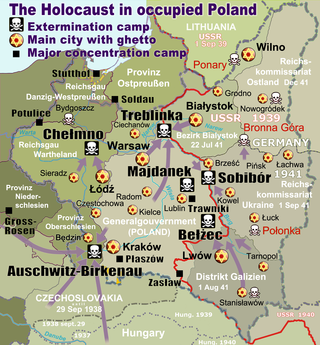
Sambor Ghetto was a Nazi ghetto established in March 1942 by the SS in Sambir, Western Ukraine. In the interwar period, the town (Sambor) had been part of the Second Polish Republic. In 1941, the Germans captured the town at the beginning of Operation Barbarossa. According to the Polish census of 1931, Jews constituted nearly 29 percent of the town's inhabitants, most of whom were murdered during the Holocaust. Sambor (Sambir) is not to be confused with the much smaller Old Sambor located nearby, although the Jewish history of the two is inextricably linked.

Jan Zbigniew Grabowski is a Polish-Canadian professor of history at the University of Ottawa, specializing in Jewish–Polish relations in German-occupied Poland during World War II and the Holocaust in Poland.

During the Holocaust in Poland, 1939–1945, German occupation authorities engaged in repressive measures against non-Jewish Polish citizens who helped Jews persecuted by Nazi Germany.
During the German occupation of Poland, citizens of all its major ethnic groups collaborated with the Germans. Estimates of the number of collaborators vary. Collaboration in Poland was less institutionalized than in some other countries and has been described as marginal, a point of pride with the Polish people. During and after the war, the Polish government in exile and the Polish resistance movement punished collaborators and sentenced thousands of them to death.

Grzegorz Berendt is a Polish historian. He is a professor at the University of Gdańsk and affiliated with the Institute of National Remembrance. Berendt is the director of the Museum of the Second World War.

Hunt for the Jews: Betrayal and Murder in German-Occupied Poland is a 2013 book about the Holocaust in Poland by Jan Grabowski. The 2013 English edition followed a 2011 Polish-language edition and was in turn followed by a 2016 Hebrew edition.
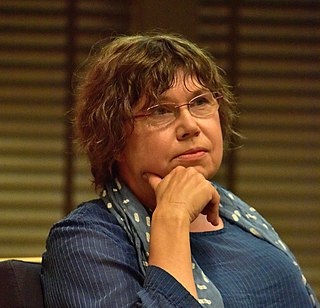
Barbara Engelking is a Polish psychologist and sociologist specializing in Holocaust studies. The founder and director of the Polish Center for Holocaust Research in Warsaw, she is the author or editor of several works on the Holocaust in Poland.
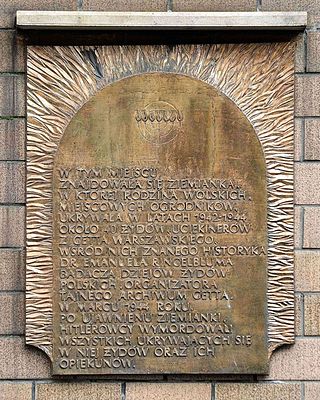
Bunker "Krysia" was an underground shelter located at Grójecka Street in Warsaw, where dozens of individuals of Jewish nationality hid during the German occupation.




















